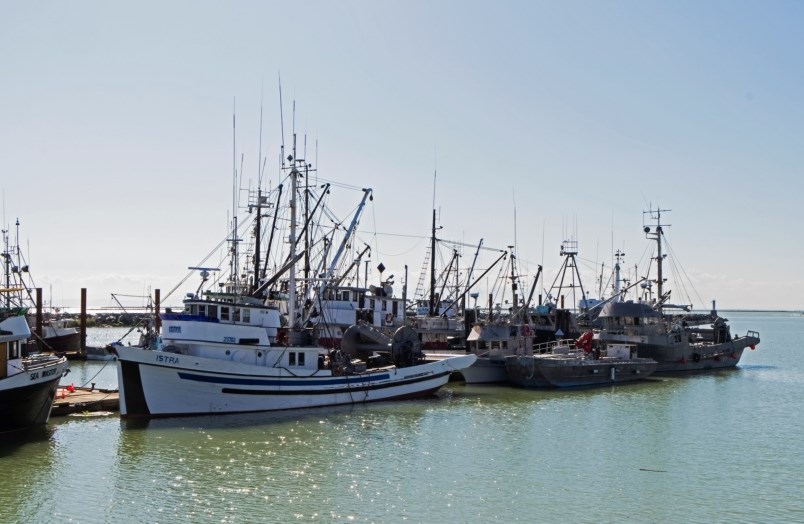Vessels in the Steveston Cannery Channel could be at risk of running aground and tipping over, possibly spilling fuel, if the channel isn’t dredged soon, according to the Steveston Harbour Authority (SHA).
But the permit to do this work could take two years to be approved and the Steveston Harbour Authority needs about $5 million to get it done.
Jaime Gusto, SHA general manager, was asking city council Monday if they could commit to $1.67 million to help pay the costs to dredge the river.
“Certain sections of Cannery Channel are approaching critical levels of water depth and are now posing safety concerns for large vessels trying to access the harbour,” Gusto said.
She pointed out fishers who aren’t familiar with the harbour are at risk of running aground, capsizing and, in the worst case, causing loss of life.
“This is a disaster waiting to happen,” she added.
There are also potential environmental risks if the river isn’t dredged, for example, the largest vessel that comes in is a fuel ship that brings in 128,000 litres of fuel.
“Can you imagine what this could mean for our marine life and habitat if a fuel tank ruptured because there wasn’t enough water to enter?” Gusto said.
Not only is Steveston Harbour a major tourist attraction, 500 vessels use the harbour, and 50 million pounds of fish are offloaded there annually, Gusto said.
Dredging costs have risen in the past few years as Environment Canada now requires more expensive “clamshell” dredging, as opposed to “cutter” dredging which essentially vacuumed the channel bottom.
Since 2015, SHA has been imposing a fee of two to three per cent on most services to raise money, and the board of directors further allocated $330,000 this year towards dredging.
“We’re the only small-craft harbour in Canada that has ever earmarked funding for dredging,” Gusto said.
She said she’s also been lobbying MLA Kelly Greene’s office for the province to pay a share of the cost, and MP Parm Bains has been working on an application to secure infrastructure funding for the channel dredging.
If the federal funding comes through, it would reduce the share that the city would have to pay, Gusto pointed out.
Long-term plan needed: Richmond mayor
Richmond Mayor Malcolm Brodie said he felt the Steveston Channel dredging problem was two-fold: first, funding was needed “ASAP” to dredge the river in the near future; secondly, there needs to be a sustainable formula to fund dredging on a regular basis.
“This is a constant problem and there’s no sense of responsibility by any level (of government) to get this done,” Brodie said.
Details are still unclear on the source of all funding and the City of Richmond’s share of the cost, so Brodie suggested council ask city staff to determine potential cost, the city’s share of the cost, and to work with other partners to figure out a cost-sharing arrangement, and potential terms for a permanent funding formula.
Brodie said he spoke recently to Bains about getting federal funding to partially pay for the dredging.
Coun. Andy Hobbs said, however, while he appreciated Bains’ work trying to secure funding to dredge the channel, he felt this was another example of senior levels of government downloading responsibilities to municipalities which have fewer dollars.
“It’s an abandonment of responsibilities that the federal government used to properly address,” Hobbs said. “It is of national importance, it is of provincial importance, and of course it’s important for the City of Richmond, but this continual downloading of costs to local governments is something that we should be very explicit in demanding a stop to.”
Coun. Linda McPhail asked whether there is a “fast track option… given the urgency of the situation.”
Gusto replied there isn’t, as far as she knows, but once she’s secured funding, she said she’d “press upon the urgency and the safety concerns."
City staff estimated they would get information on dredging to city council in about a month.



